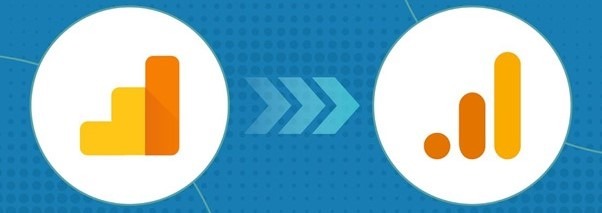July 1st marks the one-year anniversary of Google ending standard Universal Analytics (UA) processing and UA users being encouraged to adopt the new look Google Analytics 4 (GA4).
The transition may not have been smooth sailing for everyone but this latest iteration of Google’s analytics platform, designed to offer more comprehensive insights into user behaviour across websites and apps brings a wealth of new features designed to provide deeper, more actionable insights, and drive strategic business decisions.

With the one-year anniversary on the horizon, here are some of the top uses of GA4 in 2024:
1. Enhanced User Journey Tracking
Cross-Platform Tracking:
GA4’s ability to track users across different devices and platforms is one of its standout features. This means businesses can get a unified view of user interactions whether they occur on a website, a mobile app, or both. This holistic approach allows for better understanding of the customer journey, enabling businesses to optimise touchpoints and improve user experience.
Event-Based Tracking:
GA4’s event-based tracking model offers more flexibility compared to the session-based model of Universal Analytics. Businesses can track specific user interactions such as clicks, video plays, and form submissions without needing additional setup. This granularity provides insights into which actions drive engagement and conversions.
2. Improved Data Privacy and Compliance
Privacy-Centric Design:
With increasing regulations like GDPR and CCPA, GA4’s privacy-centric design is crucial. It allows businesses to anonymise IP addresses and easily manage user data retention policies. Enhanced privacy controls help ensure compliance with global data protection laws while still providing valuable insights.
Consent Mode:
GA4 supports Consent Mode, which adjusts how Google tags behave based on user consent. This ensures that businesses can respect user preferences regarding data collection while maintaining the ability to track essential metrics. Consent Mode helps in collecting accurate data even when some users opt out of certain types of tracking.

3. Advanced AI and Machine Learning Capabilities
Predictive Metrics:
GA4 leverages Google’s advanced machine learning models to provide predictive metrics. Businesses can access insights such as the probability of users making a purchase (Purchase Probability) or the likelihood of users churning. These predictive analytics enable businesses to proactively address issues and capitalise on opportunities.
Anomaly Detection:
GA4 uses machine learning to automatically detect anomalies in data. This feature helps businesses quickly identify unusual patterns or trends, such as sudden drops in traffic or spikes in conversions, allowing for rapid response and troubleshooting.
4. Detailed Customer Insights
Enhanced Segmentation:
GA4 allows for more detailed segmentation based on user behaviour and demographics. Businesses can create custom segments to analyse specific subsets of users, providing insights into different audience groups and their behaviours. This facilitates targeted marketing strategies and personalised user experiences.

User-Centric Reporting:
GA4 shifts the focus from sessions to users, providing a more accurate representation of user behaviour over time. This user-centric approach helps businesses understand long-term user engagement and lifecycle metrics, informing retention strategies and customer relationship management.
5. Integration with Google Ecosystem
Seamless Integration with Google Ads:
GA4 integrates tightly with Google Ads, enabling businesses to create audiences based on GA4 data and target them with personalised ad campaigns. This integration ensures that marketing efforts are data-driven and aligned with user behaviour insights.
Enhanced Ecommerce Reporting:
GA4 offers robust ecommerce tracking capabilities, allowing businesses to track detailed product interactions, shopping behaviour, and revenue metrics. This integration provides a comprehensive view of the ecommerce funnel, from product views to transactions, helping businesses optimise their sales strategies.

6. Customisable Reporting and Analysis
Explorations:
GA4’s Explorations feature allows for ad-hoc analysis with customisable reports and visualisations. Businesses can delve deeper into specific data points, perform funnel analysis, path analysis, and segment overlaps. This flexibility supports detailed analysis tailored to unique business needs.
DebugView:
DebugView in GA4 is a powerful tool for troubleshooting and validating analytics implementation. It allows businesses to monitor events in real-time, ensuring that data collection is accurate and that events are firing as expected. This helps maintain the integrity of data and provides confidence in the insights derived from it.
7. Real-Time Reporting
Live Data Insights:
GA4 offers enhanced real-time reporting, allowing businesses to monitor user activity as it happens. This immediacy is crucial for reacting to live events, such as product launches or marketing campaigns, enabling businesses to make informed decisions and adjustments on the fly.
8. Focus on Lifecycle Metrics
User Acquisition and Retention:
GA4 provides detailed insights into user acquisition channels and retention rates. Businesses can analyse which sources are most effective at attracting new users and which strategies help retain them over time. This focus on lifecycle metrics aids in developing sustainable growth strategies.
Churn Analysis:
By tracking user behaviour and engagement metrics, GA4 helps identify patterns that lead to user churn. Businesses can use this information to implement retention strategies, such as personalised re-engagement campaigns, reducing customer turnover and increasing loyalty.
9. Event Parameter Tracking
Enhanced Parameter Collection:
GA4 allows businesses to collect up to 25 event parameters for each event, providing detailed context about user actions. This level of detail supports more nuanced analysis and a better understanding of user interactions, which can inform product development and marketing strategies.
10. Enhanced Attribution Modelling
Data-Driven Attribution:
GA4 employs data-driven attribution models, which use machine learning to evaluate the contribution of each touchpoint in the user journey. This approach offers a more accurate representation of how different channels and interactions contribute to conversions, helping businesses optimise their marketing mix.

11. Flexible Data Import
Custom Data Integration:
GA4 supports the import of offline and third-party data, allowing businesses to enrich their analytics with additional data sources. This integration creates a more comprehensive view of user behaviour and enhances the ability to conduct multi-channel analysis.
Conclusion
In 2024, Google Analytics 4 is an essential too for Core Optimisation and our clients who seek to leverage data for strategic advantage. Its advanced features, including cross-platform tracking, privacy-centric design, AI-powered insights, and customisable reporting, enable us to gain a deeper understanding of their users and make data-driven decisions. By utilising GA4 effectively, Core Optimisation and our clients can enhance user experiences, optimise marketing efforts, ensure compliance with privacy regulations, and drive growth through detailed, actionable insights.
